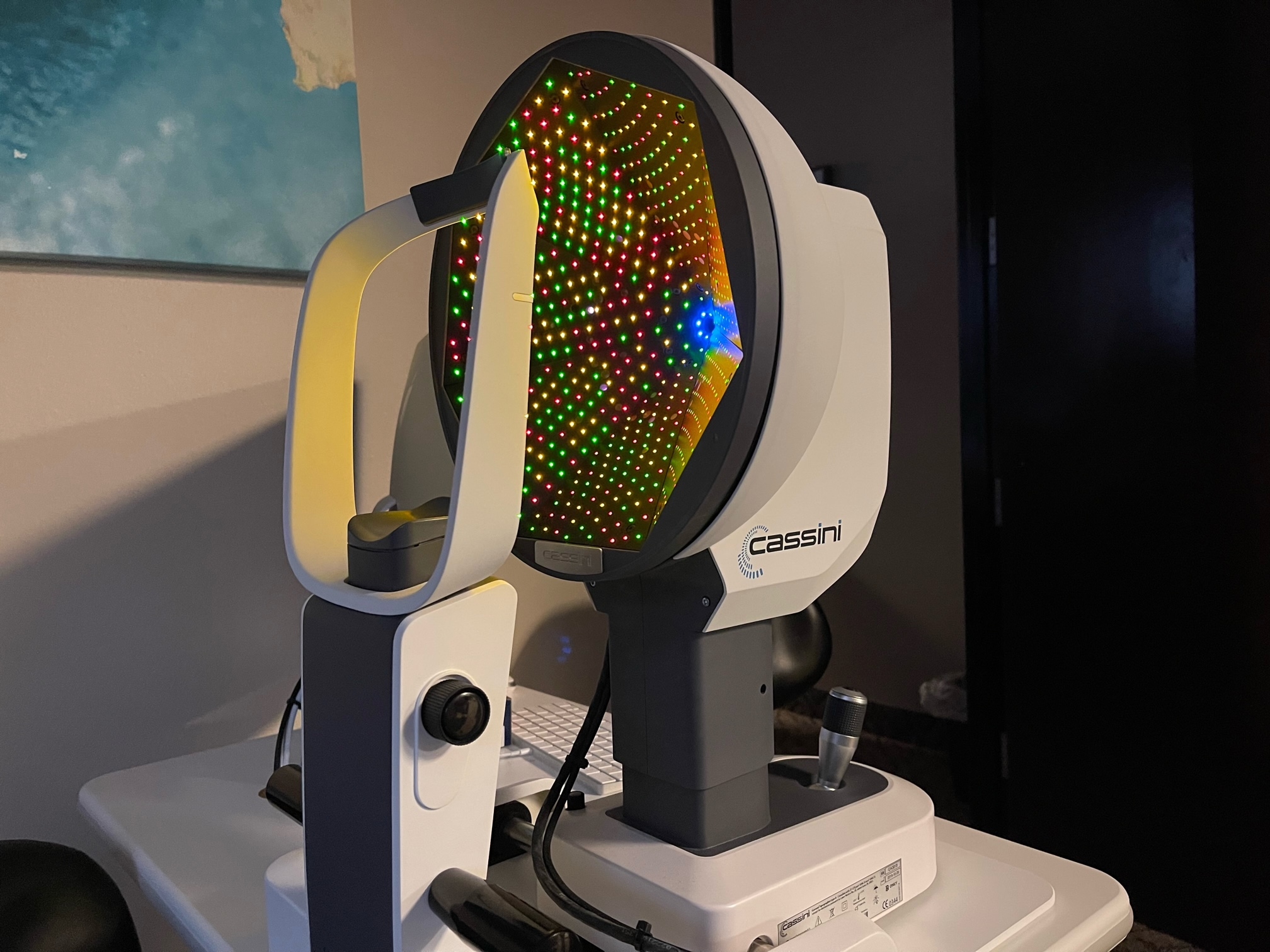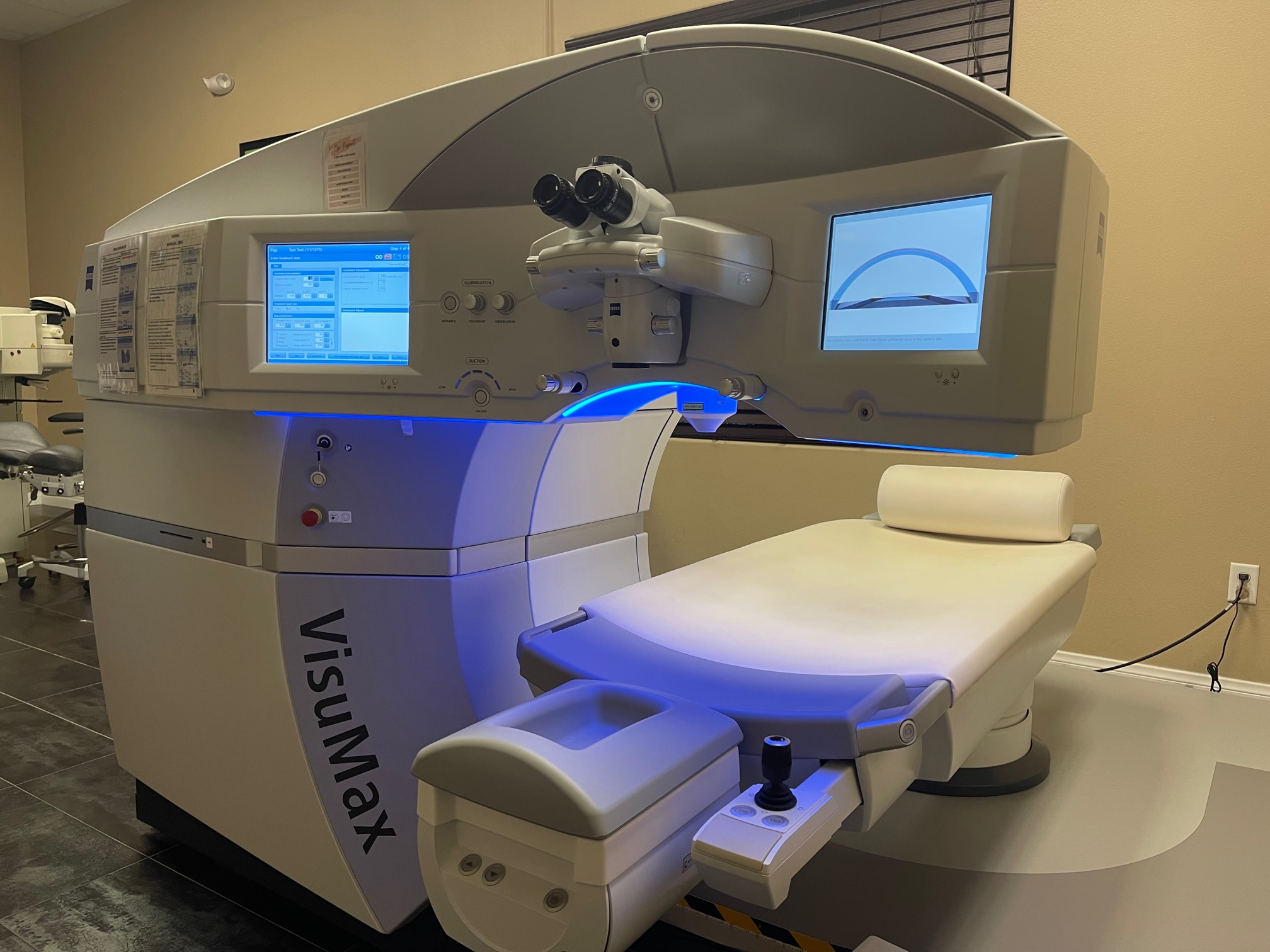The short answer to the above question is that it would be highly, highly unlikely in the year 2022 with all of the technological advancements we have seen in LASIK surgery since the excimer laser was originally approved by the FDA in 1995. We now have nearly 30 years of experience with this advanced form of refractive surgery. In the 12 years that I have been performing LASIK surgery I have seen significant advancements in safety and surgical outcomes.
I have never seen anyone go blind from LASIK. This is important because, as a UCLA trained corneal specialist, I get referrals for people who have had rare LASIK complications, and it is rare for any of these patients to have lost any vision at all from the procedure after I have corrected their issue.
This article will go over some of the risks of laser eye surgery and how they have been minimized by technological advancements. LASIK surgery is extremely safe, but it is still a surgery, and it does carry risks of complications. We recommend you minimize your risks by seeking out a well trained, experienced ophthalmologist who has invested in advanced technology to make your experience as comfortable and safe as possible.
What complications can we avoid by not using a bladed microkeratome?
The microkeratome is a device that uses a blade that oscillates back and forth at a very high rate of speed and moves across the eye in a guided path to create a flap in the cornea. This flap is essential so that your refractive surgeon can access the center portion of the cornea called the stroma. The excimer laser needs to reshape this central layer in order for the treatment to be a permanent treatment for your nearsightedness (myopia), farsightedness (hyperopia), or astigmatism.
The most modern microkeratomes are much safer than the original microkeratomes that came out in the 1990’s, but Dr. Swanic still feels the femtosecond laser is the absolute safest way to create a corneal flap. At Las Vegas Eye Institute we do not possess a bladed microkeratome, and we perform none of our advanced refractive surgery procedures with them.
The issue with using a blade begins with its inherent inability to create a precise flap depth. We want to make the flap thick enough that it is stable but not so thick that we are going too deep into corneal tissue. The ideal flap thickness is about 90-100 microns thick (in comparison a single human hair is about 70 microns thick.). The original microkeratomes made flaps that were 160 microns thick but they could see wide variations of up to 40 microns in either direction. This meant that the surgeons couldn’t be sure if they were going to create a 120 micron thick flap or a 200 micron thick flap.
What is safer than a microkeratome?
At LVEI, we utilize the Visumax femtosecond laser which we set at 100 microns. The laser is incredibly precise and creates flaps with a standard deviation of 4 microns. For the probability nerds this means that the flap will be between 90-110 microns in thickness 99% of the time. That is quite a step up from the original blades!
If we go too deep in the cornea, we can make the cornea too weak which can lead to an extremely rare LASIK complication known as corneal ectasia. Ectasia is where the cornea is too weak and becomes unstable. Corneal instability can lead to poor vision that requires correction with a hard contact lens or in the worst possible case the need for a corneal transplant. Dr. Swanic completed his fellowship in Cornea and Refractive Surgery and does perform corneal transplants, but he has never needed to perform one on any of his refractive surgery patients. In fact this complication is so rare that he has only performed two in his 12 year career for people who developed ectasia at other offices. These patients have done well but, clearly, this is a complication that we avoid at all costs.

LVEI’s advanced topographer, the Cassini. Its light reflection can detect ectasia and those at risk.
Are there other possible LASIK complications from using a blade?
Yes. Blades can also go too far across the eye and lead to a flap that has no hinge. A flap without a hinge is known as a “free cap.” Fortunately this complication can still lead to extraordinarily good vision if handled appropriately. The surgeon can realign the tissue with marks that he had previously placed, put a contact lens on the eye, and the tissue will re-adhere with no effect on the vision correction surgery whatsoever. We have never seen this complication with a femtosecond laser like our Visumax, but it has been reported with the Ziemer femtosecond LASER. However, as long as the surgeon is prepared for this possibility the outcome of the surgery can still be excellent.
A blade used during the LASIK procedure can also lead to a condition called a “buttonhole” in the flap. This is when the flap is not complete in the center as the blade was not deep enough during the center of its travel. This issue also will usually end up with an excellent visual outcome. However, the procedure cannot be completed on the day of the initial LASIK eye surgery. Experienced LASIK surgeons would recognize this issue and not proceed with the excimer ablation. A contact lens would be placed on the eye and the procedure could be performed at a later date with a procedure known as PRK (avoiding the flap entirely.). The buttonhole of a flap is a unique complication seen only with blades. I have never seen this complication with any femtosecond laser such as the Visumax or the Intralase laser that I was originally trained on.
Can you get an infection from LASIK?
Yes. Like any surgical procedure, you can get an infection from LASIK or PRK. The good news is that most infections will be minor and if handled appropriately will not lead to any loss of vision. The most important thing to remember is that if you are currently wearing contact lenses you are actually at a much higher risk of getting an infection that could lead to severe loss of vision than you are from LASIK surgery. In my clinical practice I see on average one infection per week from people wearing contact lenses. In comparison over the last 12 years I have not seen a single infection from a LASIK case I performed, and I have only seen one infection from a PRK case performed by another surgeon.
Why are infections from LASIK surgery so low but contact lenses so high?
The reason is that LASIK is a one time risk where you would only be likely to get an infection in the first 3-4 days of healing. After that the risk is zero. In contrast every day that you are wearing contact lenses you are placing a piece of plastic over your cornea that limits its ability to get oxygen and nutrients from your tears. The contact lenses themselves also tend to build up bacteria on them over time. This lack of oxygen and increased bacteria load make it more difficult for the cornea to defend itself from infection.
Another important point to consider is that most people wear contact lenses for a VERY long time, from teen years to age 60 (when they often get cataract surgery, many eliminate the need for contact lenses.) 45 years x 365 days is over 16,000 days that your body needs to defend itself from bacteria instead of 3-4 days post LASIK. Another key point to remember is that people who sleep in their contact lenses are actually at 10-15X greater risk of developing an infection than people who do not sleep in their contact lenses. This fits with what we see in our office as well.
If you get nothing else out of this article we hope that if you currently sleep in your contact lenses that you consider stopping doing this immediately to avoid these serious complications of overnight lens wear. This infection risk is also seen in people who wear orthokeratology lenses overnight to reshape their cornea so they don’t need to wear lenses during the day. One of the worst eye infections I have ever seen as a corneal specialist, was in a nearsighted patient wearing orthokeratology lenses overnight.
If you follow your surgeon’s instructions at the time of surgery you can also greatly reduce your risk of infection from your LASIK procedure. Most LASIK surgeons, including myself, place their LASIK patients on antibiotic eye drops several days prior to the procedure to help kill any bacteria that may be present on the ocular surface. On the day of the procedure we also apply betadine to the eyes to further kill any bacteria. Lastly, at the conclusion of all LASIK cases we immediately place a drop of antibiotic on the eye. Our patients are then instructed to place antibiotic drops on their eyes 4 times per day for the next 3-4 days until their antibiotic drops run out. This regimen has served our practice well and is commonly used to make LASIK one of the safest surgical procedures performed worldwide.
Is it possible that if I move my eye during laser eye surgery that my vision will be damaged?
Fortunately, this is not possible with modern excimer lasers. In 2022, it would be hard to find any LASIK surgeon in the world who is using an excimer laser without advanced eye tracking technology. Modern excimer lasers utilize multiple infrared cameras to monitor your pupil during the procedure. When small movements occur the laser simply moves the spot with the eye movement. If a large movement were to occur and the laser could not track the pupil, the laser would stop firing immediately. Your LASIK surgeon would then ask you to find the fixation light that guides your eye position during the procedure.
Is all LASIK surgery the same? Why are some practices more expensive than others?
As you have likely surmised from this article, all LASIK procedures are not the same. There are ways that a LASIK surgeon can offer a procedure at a lower cost. Unfortunately, most of those ways either decrease safety or decrease quality of vision post procedure.
Very few practices in the United States are still performing LASIK surgery with a bladed microkeratome, but those that do save a substantial amount of money compared to those that use a femtosecond laser like the Visumax or Intralase. How? A microkeratome only has a control unit that is combined with its suction apparatus. This control unit can be purchased brand new for under $15,000. In comparison, a femtosecond laser like the Visumax (see image below) is an incredibly complex piece of machinery that includes advanced laser and computer technology to fire low energy pulses 500,000 times per second. The Visumax costs over $300,000 USD.

LVEI’s Zeiss Visumax. A very advanced femtosecond laser.
In comparison a microkeratome requires a new blade that typically costs between 50-100 dollars and is used on both eyes. Devices like the Visumax require your LASIK surgeon to purchase sophisticated treatment cones and software licenses for an average of 150 dollars per eye. Thus the difference in per procedure cost alone is 300 dollars compared to 50-100 dollars for a blade. You may now see how practices using a blade can charge less money!
I’m convinced that LASIK is safer than my contacts. How do I make an appointment for a free LASIK consult?
Request an appointment from our appointment page. We would love to see you in our office for a free eye exam to determine if you area good candidate!
Want to know more about LASIK? Check out our LASIK page.
